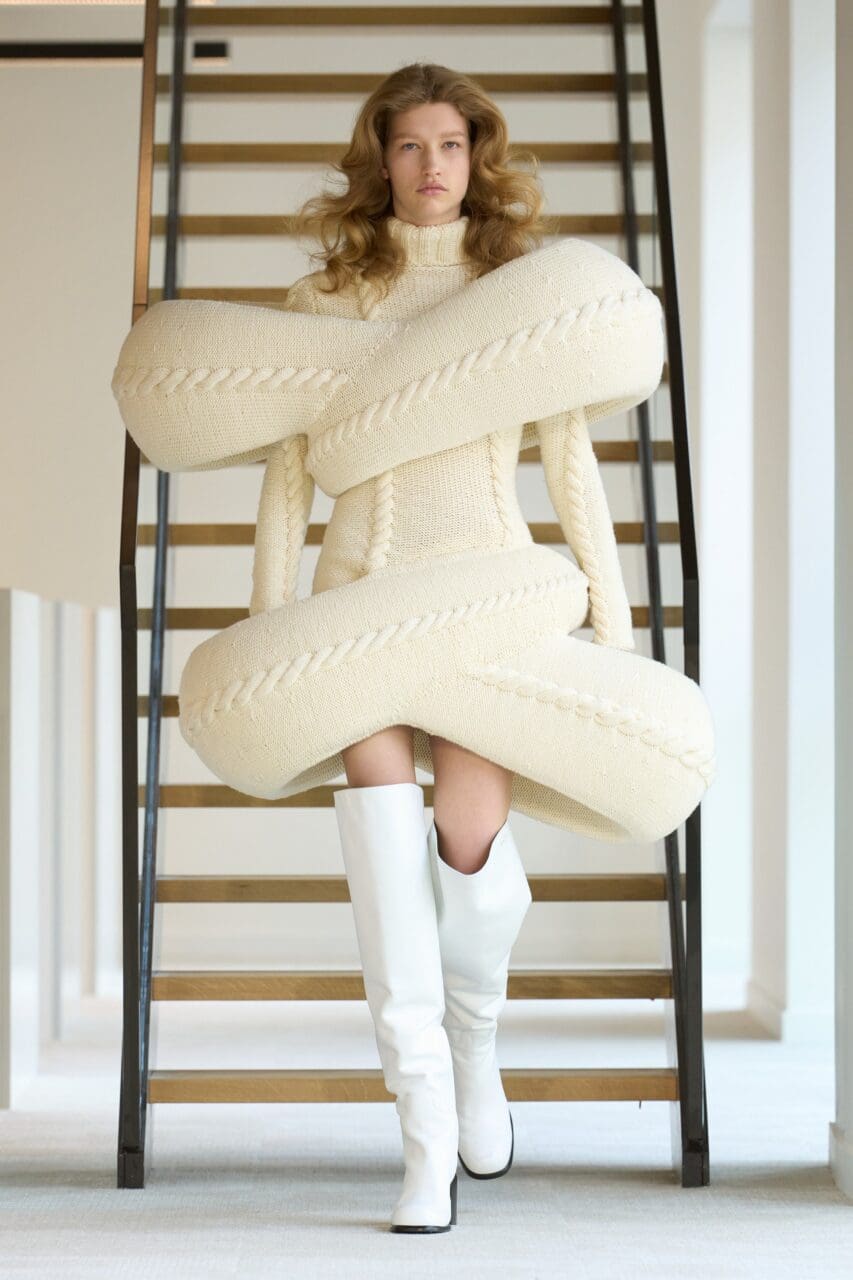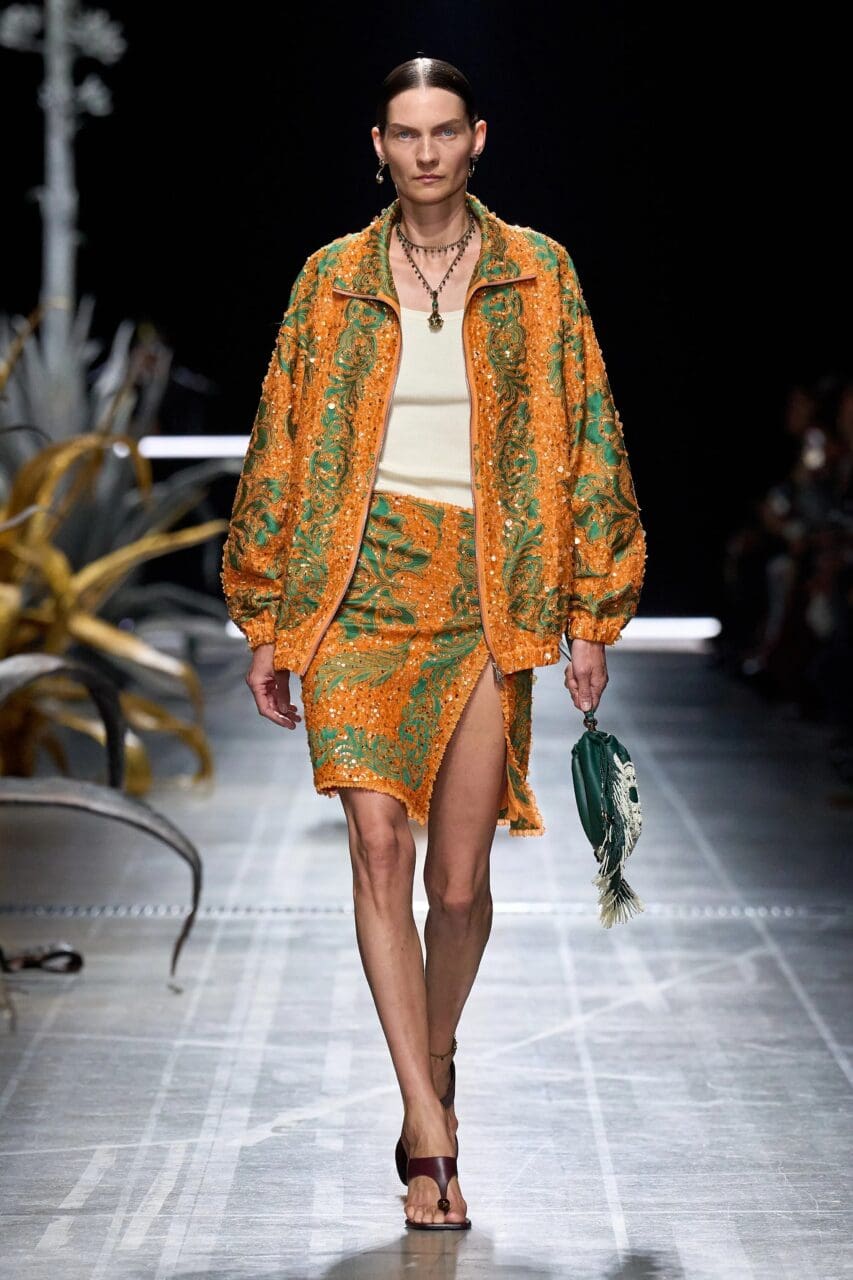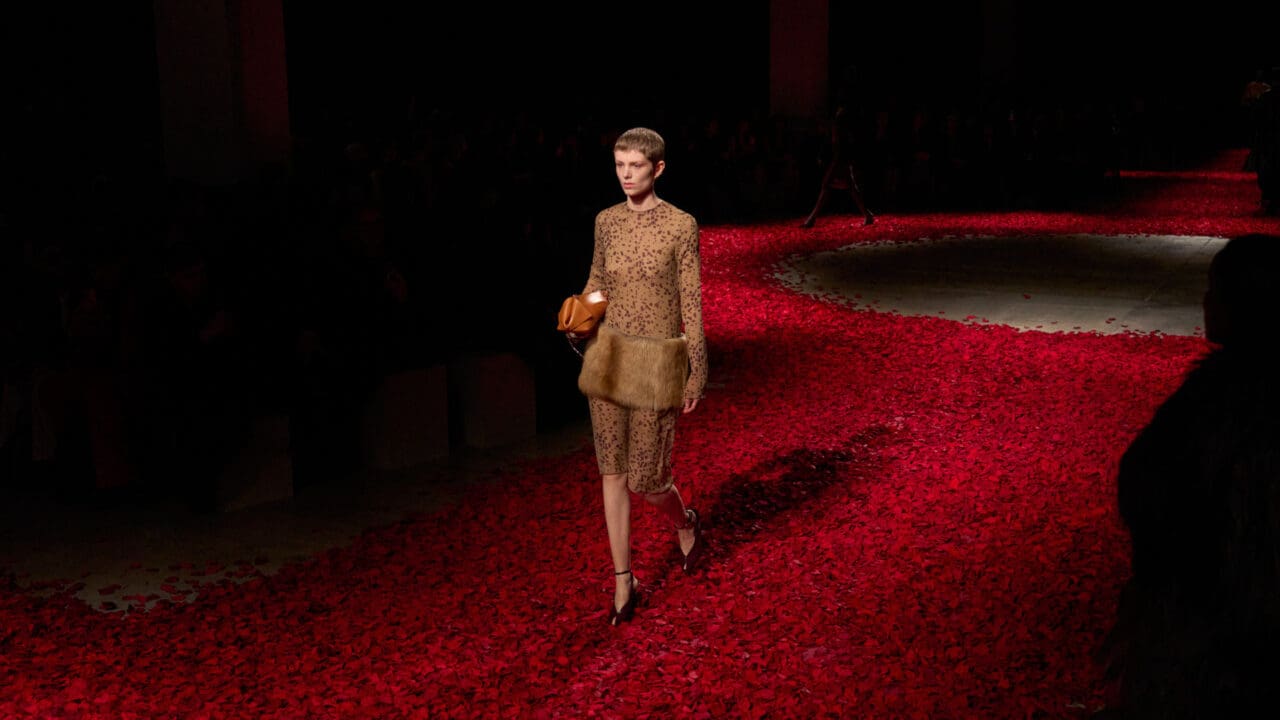除了創意上的挑戰,許多設計師的現金流也陷入了停滯。零售商取消了秋季前的訂單,使品牌面臨著堆積如山的未售出庫存,服裝銷售在春季創下新低。對於那些想展示新東西的人來說,唯一的選擇是變得資源豐富。他們利用過去幾季剩下的材料,重現舊有的圖案,依靠自己的雙手,在家裏縫製、立體建材、點綴和染色服裝。 「我通過它意識到,我從來沒有想過要做更多的東西,要更有創意。」就連 Jonathan Anderson 這麼說。這就是約束和限制的好處,因為它們能夠同時縮小了你所關注的事情,並釋放出你在#BeforeTimes 從未有過的想法。
當然,另一個好處是,所有這些方法都更具可持續性:利用你所擁有的東西,重新利用材料,只設計真正需要的東西。正如 Gabriela Hearst 所言,設計師們 「撇去了肥肉」,「肥肉」是為了取悅零售商或是滿足世俗外觀而製作的多餘物品。幾十年來,零售商和媒體的口號是「越多越好」:更多的系列、更多的SKU、更多的顏色、更多的獨家產品、更多的合作,最終造成更多的浪費。
但對大多數人來說,這也是一種似曾相識的感覺。多年來,設計師、零售商和編輯們一直在抱怨這種快速節奏、過剩時裝以及對創造力的傷害,更不用說對環境的影響了。一場全球性的大流行才將對話轉化為行動,就像在3月所採取的生活方式:社交距離、在家工作、戴上口罩一樣,時尚需要的轉變。一開始聽起來是有點不可理喻,但執行起來並不困難。這些變化加在一起,將產生巨大的影響。
Gabriela Hearst 則不遺餘力地計畫着下一個10年的時尚,用有限的資源,以較小的規模,有意識地製造,並不缺乏創造力。
「這場大流行讓我們工作的心態感覺更有意義,我們總是在考慮未來10年,考慮甚麼時候會出現缺水和氣候災害。其實環境危機才是消滅我們這個物種的原因,並非大流行。我們必須要徹底改變我們的行為和系統,而大流行則徹底喚醒我們要在時裝業內做出改變。」Gabriela Hearst 對可持續性發展的時裝向來都是竭盡全力。
全新 Gabriela Hearst 度假系列便有 60% 材料都是利用回收的面料和過往使用過的材料製作的,將大流行前購買的材料與剩餘回收再利用的布料拼接。對於設計師 Gabriela Hearst 來說,使用剩餘布料並不是一種新的挑戰;她最終的目標是達到80%的非原生材料製造服裝。
不過由於 Gabriela Hearst 在倫敦和紐約的店面已經關閉了幾個月,品牌未售出的商品更是堆積如山,Gabriela Hearst 不願意將這些商品大幅打折出售。相反,Gabriela Hearst 正在做一些更大膽的事情,便是推出復古系列,將上一季的服裝進行解購和重新設計,以 upcycling 的方式將奢侈品設計升級再造。
「你能做的最可持續的事情就是在設計上,很多時候就在這浪費不少。如果你控制你的本能,避免過度設計,你真的會變得更敏銳、更專注。這就是我喜歡這些限制的原因,你的創造力以一種非常專注的方式流動。如果你優先考慮可持續發展,這就是答案。如果我們要做一件帶裝飾的亞麻布連衣裙,我們要在上一季的 herringbone 蕾絲裝飾和新的 herringbone 蕾絲裝飾之間做出選擇,我們就會使用已經有的那件。如果這是你的心態:新的不一定是更好的,你可以把剩下的布料變得很漂亮,你就會有很大的進步。」
>> 在 Magzter 訂閱電子書 click here
>> 訂閱紙本實體書 click here
Editor
EMILY FARRA Translated by Katherine Ho



